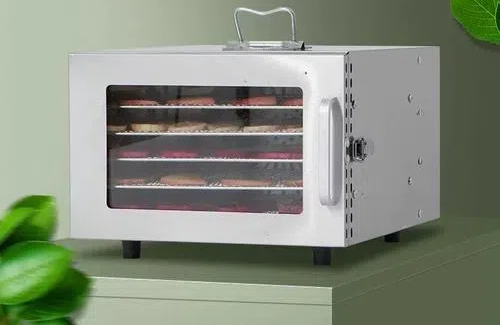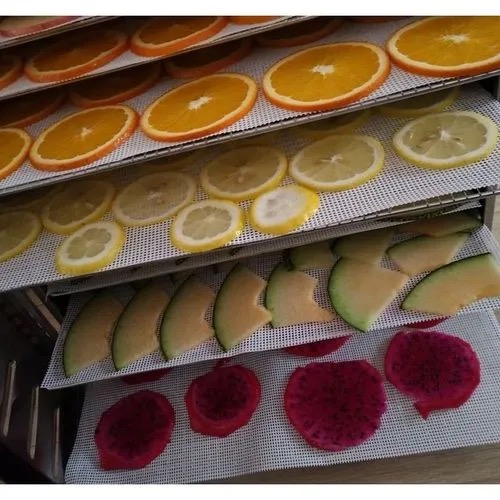
Content Menu
● Introduction
● Understanding Food Drying Machines
● Benefits of Using Food Drying Machines
● Types of Food Drying Machines
● Choosing the Right Food Drying Machine
● Maintenance and Care for Food Drying Machines
● Conclusion
● Frequently Asked Questions
>> 1. What foods can be dried using a food drying machine?
>> 2. How long does it take to dry food in a dehydrator?
>> 3. Are food drying machines energy-efficient?
>> 4. Can I use a food drying machine for making jerky?
>> 5. What is the best temperature for drying fruits?
Introduction
Food preservation has been a crucial aspect of human survival and culinary practices for centuries. Among various methods, drying stands out as one of the oldest and most effective techniques. In recent years, food drying machines have gained popularity, offering a modern solution to preserve food while retaining its nutritional value and flavor. This article explores the significance of food drying machines, their benefits, types, and how to choose the right one for your needs.

Understanding Food Drying Machines
Food drying machines, commonly known as dehydrators, are appliances designed to remove moisture from food items. By reducing the water content, these machines inhibit the growth of bacteria, yeast, and mold, thereby extending the shelf life of food. Unlike traditional drying methods, which may rely on sunlight or air circulation, food drying machines provide controlled environments that ensure consistent results.
The primary types of food drying machines include:
1. Dehydrators: These machines use low heat and airflow to dry food evenly.
2. Air Dryers: These are often larger and can handle bulk drying, suitable for commercial use.
Benefits of Using Food Drying Machines
Investing in a food drying machine comes with numerous advantages:
1. Preservation of Nutrients and Flavors: Unlike canning or freezing, drying retains most of the food's nutrients and flavors, making it a healthier option for food preservation.
2. Extended Shelf Life: Dried foods can last for months or even years when stored properly, reducing food waste and saving money.
3. Cost-Effectiveness: By drying seasonal fruits and vegetables, you can enjoy them year-round without the high costs associated with fresh produce out of season.
4. Convenience and Ease of Use: Most food drying machines are user-friendly, allowing you to set the temperature and timer, and let the machine do the work.
Types of Food Drying Machines
When selecting a food drying machine, it's essential to understand the different types available:
1. Dehydrators: These are the most common type, featuring multiple trays for drying various foods simultaneously. They are ideal for home use and come in various sizes and capacities.
2. Air Dryers: These machines are typically larger and designed for commercial use, capable of handling significant quantities of food.
3. Commercial vs. Home Use Machines: Commercial machines are built for durability and high capacity, while home machines focus on convenience and ease of use.

Choosing the Right Food Drying Machine
Selecting the right food drying machine involves considering several factors:
1. Capacity: Depending on your needs, choose a machine that can handle the volume of food you plan to dry.
2. Energy Efficiency: Look for models that consume less power, which can save you money in the long run.
3. Price: Food drying machines come in various price ranges. Determine your budget and find a model that offers the best features within that range.
Popular brands like Nesco, Excalibur, and Cosori are known for their quality and reliability. User reviews can provide valuable insights into the performance and durability of specific models.
Maintenance and Care for Food Drying Machines
To ensure your food drying machine operates efficiently, regular maintenance is crucial:
1. Cleaning Tips: After each use, clean the trays and interior with warm soapy water. Avoid using abrasive materials that could damage the surfaces.
2. Troubleshooting Common Issues: If your machine is not drying food evenly, check for blockages in the airflow and ensure the temperature settings are correct.
3. Ensuring Longevity: Store the machine in a dry place and avoid exposing it to moisture to prevent rust and damage.
Conclusion
Food drying machines play a vital role in modern food preservation, offering a convenient and efficient way to extend the shelf life of various foods. By investing in a quality food drying machine, you can enjoy the benefits of preserved nutrients, reduced food waste, and cost savings. Whether for personal use or commercial purposes, these machines are an excellent addition to any kitchen.

Frequently Asked Questions
1. What foods can be dried using a food drying machine?
A variety of fruits, vegetables, herbs, and meats can be dried effectively.
2. How long does it take to dry food in a dehydrator?
Drying times vary based on the type of food and the machine used, typically ranging from 4 to 12 hours.
3. Are food drying machines energy-efficient?
Yes, many modern food drying machines are designed to be energy-efficient, using less power than traditional ovens.
4. Can I use a food drying machine for making jerky?
Absolutely! Many dehydrators are specifically designed for making jerky and other dried snacks.
5. What is the best temperature for drying fruits?
Generally, fruits should be dried at temperatures between 135°F to 145°F (57°C to 63°C) for optimal results.












